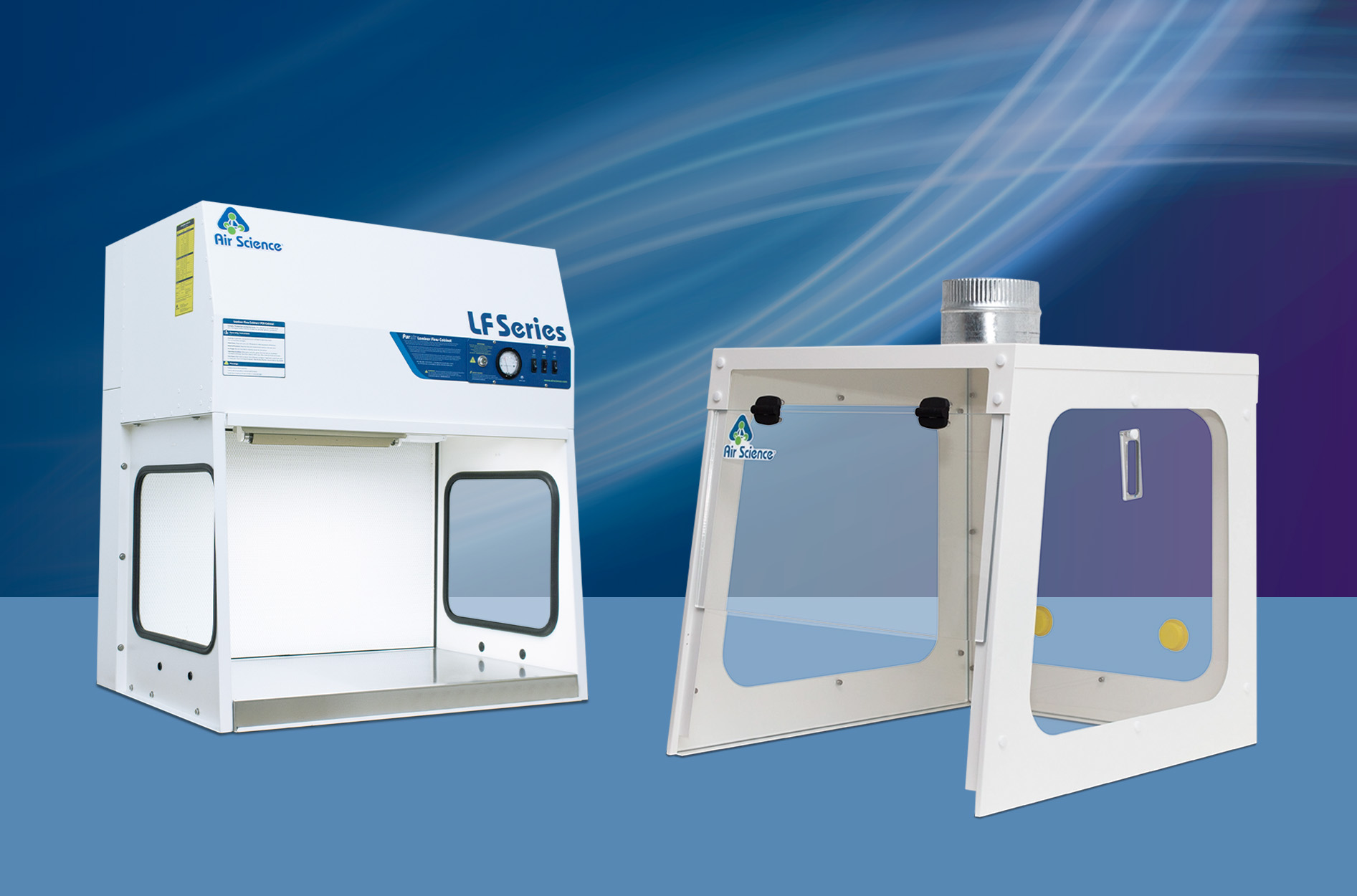
The Difference Between Fume Hoods and Laminar Flow Hoods
Both ducted fume hoods and laminar flow hoods are integral parts of many modern laboratory settings. Yet they serve very different purposes.
Ducted & Ductless Fume Hoods
Both ducted and ductless fume hoods are carefully designed to protect users and the environment from hazardous or possibly hazardous fumes. Ducted fume hoods pull fumes through facility ductwork and exhaust the contaminated air outside the facility. While they can be used with a HEPA or ULPA filter, the primary protection they offer is to the user and the surrounding environment. In a ductless fume hood, vapors or fumes are adsorbed by an activated carbon filter. The cleaned air is then recirculated into the laboratory. Ductless fume hoods can be easily installed in various locations without incurring additional expenses. They are user-friendly, cost-effective, and eco-friendly.
Laminar Flow Hoods
Laminar flow hoods, sometimes called clean benches, are designed to protect items on the work surface from particulate contaminants. They work by creating a steady, unidirectional flow of air that sweeps particulates away from items on the work surface. While they protect equipment or products on the workbench, they are not intended for use with hazardous substances. Laminar flow hoods are unable to capture harmful fumes and are not designed to take the place of a biosafety cabinet (BSC), which protects operators and the environment, in addition to providing product protection. They are also not a suitable substitute for ductless or ducted fume hoods in applications that require operator or environmental protection from hazardous or potentially hazardous fumes.
Choosing the Ideal Equipment
While labs can benefit from both ducted fume hoods and laminar flow hoods it is important to understand their different applications. The main difference between the two is their intended protection. Laminar flow hoods shield your work from particulates. Ducted fume hoods protect you and the environment from vapors. While it’s true that the use of an optional HEPA/ULPA filter can provide particulate protection in fume hoods, that protection is extended to operators and the surrounding environment, not items or products on the work surface.
Learn more about Air Science® ducted fume hoods or shop online.